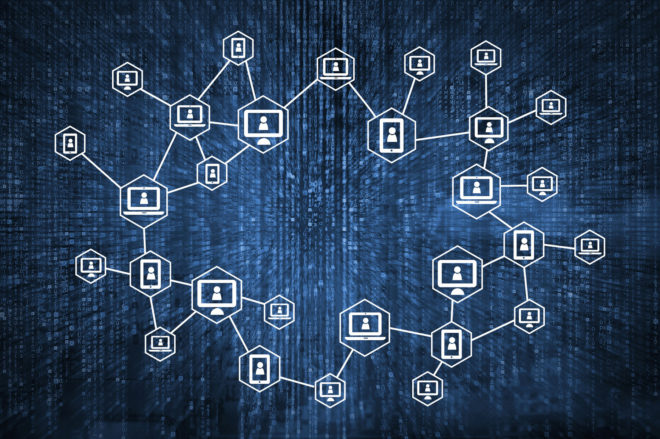Introduction:
In recent years, cybersecurity has become a growing concern for individuals, businesses, and governments alike. As more and more sensitive data is stored online, the risk of cyber attacks and data breaches increases. Blockchain technology has emerged as a potential solution to this problem, offering a secure and transparent way to store and manage data. In this blog post, we will explore how blockchain can ensure better cybersecurity.
Important Points:
- Blockchain technology is a decentralized, distributed ledger that allows for secure, transparent, and tamper-proof record keeping.
- Each block in the chain contains a cryptographic hash of the previous block, creating an immutable and unalterable record of all transactions on the network.
- Because blockchain operates on a distributed network, there is no central point of failure or control, making it more difficult for hackers to launch cyber attacks.
- Blockchain can be used to create secure and transparent data storage and sharing systems, reducing the risk of data breaches and cyber attacks.
- Blockchain can also be used to create secure and tamper-proof digital identities, reducing the risk of identity theft and fraud.
FAQ’s:
How does blockchain protect against cyber attacks?
Blockchain technology offers several key features that make it more secure than traditional data storage systems. Because the ledger is distributed across a network of nodes, there is no central point of control that can be targeted by hackers. Additionally, the use of cryptographic hashes and digital signatures makes it difficult for hackers to alter or falsify data on the network.
Can blockchain prevent all types of cyber attacks?
While blockchain technology offers many advantages in terms of cybersecurity, it is not a panacea. Some types of attacks, such as social engineering and phishing, can still be successful against blockchain systems if users are not careful. Additionally, attacks that target individual nodes or compromise the network as a whole can still be possible.
What are some real-world applications of blockchain for cybersecurity?
There are many potential use cases for blockchain in cybersecurity. For example, blockchain can be used to create secure and transparent supply chain management systems, reducing the risk of counterfeiting and fraud. Blockchain can also be used to create secure digital identities, which can be used to verify identities online and reduce the risk of identity theft and fraud.
How does blockchain compare to traditional security measures?
Traditional security measures such as firewalls and encryption can help protect against cyber attacks, but they can still be vulnerable to attacks that target central points of control. Blockchain offers a decentralized, distributed network that is more difficult to attack and offers greater transparency and accountability.
Are there any regulatory or legal concerns with using blockchain for cybersecurity?
There are currently few regulations governing the use of blockchain in cybersecurity, which can create legal and regulatory uncertainties. However, as blockchain technology becomes more widely adopted, it is likely that governments and regulatory bodies will develop frameworks to govern its use.
How can businesses and organizations implement blockchain for cybersecurity?
Implementing blockchain for cybersecurity requires careful planning and execution. Businesses and organizations should first identify areas where blockchain can provide the greatest benefits, such as supply chain management or identity verification. They should also consider the cost and complexity of implementation, as well as any legal or regulatory considerations.
What are some potential drawbacks of using blockchain for cybersecurity?
One potential drawback is the complexity and cost of implementation. Another potential concern is the energy consumption required to operate blockchain networks, which can be significant. Additionally, the lack of standardization and interoperability between different blockchain networks can limit their usefulness.
Pros:
- Decentralized network makes it difficult for hackers to launch cyber attacks.
- Cryptographic hashes and digital signatures make data tamper-proof and secure.
- Transparency and accountability of blockchain make it easier to track and trace transactions.
- Secure and tamper-proof digital identities reduce the risk of identity theft and fraud.
- Increased security and transparency can reduce the risk of data breaches and cyber attacks.
Cons:
- Blockchain technology is still relatively new and untested in many applications.
- Implementation can be complex and costly.
- Blockchain networks can be slow and require significant computing power to operate.
- Lack of standardization and interoperability between different blockchain networks can limit their usefulness.
- Blockchain is not a panacea for cybersecurity and can still be vulnerable to some types of attacks.
Final Conclusion:
While blockchain technology is not a silver bullet for cybersecurity, it does offer many advantages over traditional data storage systems. By creating secure, tamper-proof, and transparent networks, blockchain can help reduce the risk of cyber attacks and data breaches. As technology continues to evolve, it is important to explore new solutions and technologies that can improve cybersecurity and protect sensitive data.







